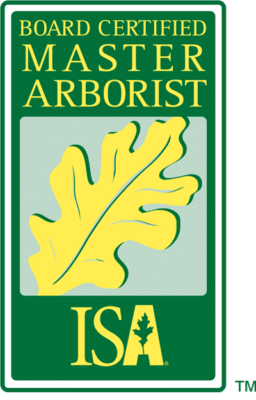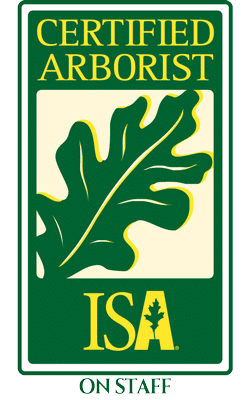Tree Pruning & Trimming
Keep Your Trees Looking Their Best With Proper Pruning
For the Health & Beauty of your Trees
Properly pruning your trees increases their health by 20%. Neglecting to prune your trees often may lead to various landscape issues, such as diseases and infection. At Riverbend Landscapes & Tree Service, we adhere to all ANSI A300 Standards and assure that our professional tree pruning services will improve the health and appearance of your trees. Our arborists offer industry-standard tree pruning that not only maintains your trees but also improves your safety.
Ready to find out more?
Call us today at 703-420-7264 or click the button to contact us for a free quote!
Crown Cleaning
WHY? Crown cleaning is a pruning technique used when tree branches are diseased, weak, too long, or dead. These conditions can harm the tree's overall structural integrity and may put your landscape’s health at risk. By pruning these problematic sections of the tree, we improve the tree's health and longevity.
WHAT? Our arborists selectively prune deadwood, diseased branches, and dying limbs from the canopy of a tree. We also prune crossing and rubbing limbs that can ruin the tree's shape or open up wounds that leave it vulnerable to pests and diseases.
Crown Raising or Elevating
WHY? Sometimes, tree branches grow too low to the ground or nearby structures, obstructing access to walkways, patios, and drives, creating unusable areas beneath the tree, or casting too much shade.
WHAT? Crown raising (or elevating) involves removing the lower branches to provide clearance from the ground or structure. This helps guide the tree's growth and lifts the limbs off the ground, allowing more sunlight to break through and opening access.
Crown Raising or Elevating
WHY? Sometimes, tree branches grow too low to the ground or nearby structures, obstructing access to walkways, patios, and drives, creating unusable areas beneath the tree, or casting too much shade.
WHAT? Crown raising (or elevating) involves removing the lower branches to provide clearance from the ground or structure. This helps guide the tree's growth and lifts the limbs off the ground, allowing more sunlight to break through and opening access.
Crown Reduction or Shaping
WHY? When a tree grows too large for the space it's in, grows up into overhead power lines, or develops an unappealing or lopsided shape, then it's time to look at pruning options to reduce the size or reshape the canopy.
WHAT? Crown reduction or shaping consists of decreasing the actual height or spread of a tree.
IMPORTANT NOTE - This is NOT the same thing as tree topping.
It is also important to note which species of trees are better equipped to sustain this type of pruning. Our tree specialists can help you choose the exact type of pruning your trees need most.
Hazardous Tree Pruning
WHY? When branches are decaying or declining, they pose an imminent danger to you and your family. For example, dead branches close to the house, street, or patio/playground can be a major safety hazard. Trees may also have been damaged due to high winds, snow or ice loads, lightning strikes or construction activities.
WHAT? Our team offers on-call emergency hazardous reduction pruning services that can help you maintain your trees and keep you safe.
IMPORTANT NOTE - If you're experiencing a tree emergency, don't wait!
Call (703) 963-3938 for on-call emergency services!
Hazardous Tree Pruning
WHY? When branches are decaying or declining, they pose an imminent danger to you and your family. For example, dead branches close to the house, street, or patio/playground can be a major safety hazard. Trees may also have been damaged due to high winds, snow or ice loads, lightning strikes or construction activities.
WHAT? Our team offers on-call emergency hazardous reduction pruning services that can help you maintain your trees and keep you safe.
IMPORTANT NOTE - If you're experiencing a tree emergency, don't wait!
Call (703) 963-3938 for on-call emergency services!
Dead vs Dormant: Pruning FAQs
Healthy branches on most types of trees are flexible, while dead branches snap easily. Gently bend a small branch or twig slightly. If it bends, it’s most likely alive. If it breaks, it’s probably dead.
You can also try a “scratch test,” where you gently scratch off the outer layer of bark on a twig or small branch. If the layer just beneath the outer bark is green, the branch is alive. If the bark and the wood beneath it is grey, dry, and brittle, chances are the branch is now deadwood.
If you can’t safely reach the section of the tree or want a professional’s opinion (we have a variety of resources to check on a tree’s health), schedule a tree consultation.
Dead branches tend to break off and fall at inopportune times, so we advise scheduling it to be pruned out as soon as possible. If entire sections of the tree are dead, there’s likely an underlying issue that you should identify and treat first. If significant sections of the tree are dead, it may need to be removed.
If the branch is dormant, leave the branch (and tree) alone. It should leaf out during the springtime. If leaves do not appear, contact us to look over your tree.
Dead branches are cut back to live wood or removed entirely, regardless of where they are in the tree. In contrast, live branches are carefully selected and strategically pruned to achieve specific goals, such as improving the tree’s overall structure or reducing its size.
If a dead branch is part of an ash tree suffering from emerald ash borer, different steps may be taken as trees impacted by EAB are often extremely brittle and dangerous.
We recommend removing dead branches as soon as possible to minimize the risks involved. Deadwood is prone to break and fall without warning, harming anyone or anything below it. And a storm or strong wind could turn the dead, broken branch into a dangerous projectile. Plus, if the branch has been killed by a pest or disease, leaving it in place could help the problem spread to other parts of the tree.
No. We have the necessary skills to be able to tell a live branch from a dead one. Often, the lack of leaves makes pruning easier and more efficient as we can more easily access the entire tree and can better see its structure. See the details of when to prune what in Northern Virginia.
Crape myrtles go dormant every winter and are one of the last trees to begin regrowing their leaves in the spring. In fact, they often won’t show any signs that they are still alive until temperatures reach 80 degrees Fahrenheit for a few weeks in a row!
However, if you get impatient, you can try either of the techniques we shared above to see if your tree (or a branch) has survived the winter weather.
We recommend that you schedule your crape myrtle pruning for late winter or early spring. Crape myrtles bloom on new growth, so pruning in late winter will give you a better chance of more blossoms.
No. It’s normal for some needles to turn brown and fall off every few years, usually in autumn. Pine trees, for example, lose needles every fall.
However, needles turning brown may also point to a problem with the tree, such as overwatering, underwatering, salt damage, or a pest or disease. If only part of your conifer has brown needles, or it’s turning brown in spring or summer, contact us for a tree inspection to determine the cause.

Why choose Riverbend for PRUNING & TRIMMING SERVICE in Northern Virginia?
There are many providers in Northern Virginia who say they can "prune your trees". But they're not all equal. Always look for a company with ISA Certified Arborists on staff and ask to see proof of general liability insurance specifically for tree work, as well as workers' compensation insurance. Below are some of the reasons why we think Riverbend Landscapes & Tree Service is the best choice for tree pruning services.

ISA Board Certified Master Arborist

ISA Certified Arborists
To ensure all tree work is safely and professionally done to industry standards
ISA Board Certified Master Arborist
ISA Certified Arborists
To ensure all tree work is safely and professionally done to industry standards
Locally-owned & operated
Founded, owned, and operated by a life-long Great Falls, VA resident
Customer-Focused & Responsive to Your Needs
We always keep you updated and deliver on YOUR needs
Licensed & Fully Insured
For your peace of mind and complete protection - as well as ours
Skilled climbers & crane operators
To handle emergencies efficiently and safely
Top-of-the-line equipment
To quickly reach and remove damaged trees
Pruning & Trimming
Schedule an appointment with one of our professional arborists for a free evaluation to see what kind of pruning would be best for your trees.
703-402-9366
Give us a call - we'd love to talk with you!
703-402-9366
Give us a call - we'd love to talk with you!
703-402-9366
Give us a call - we'd love to talk with you!
